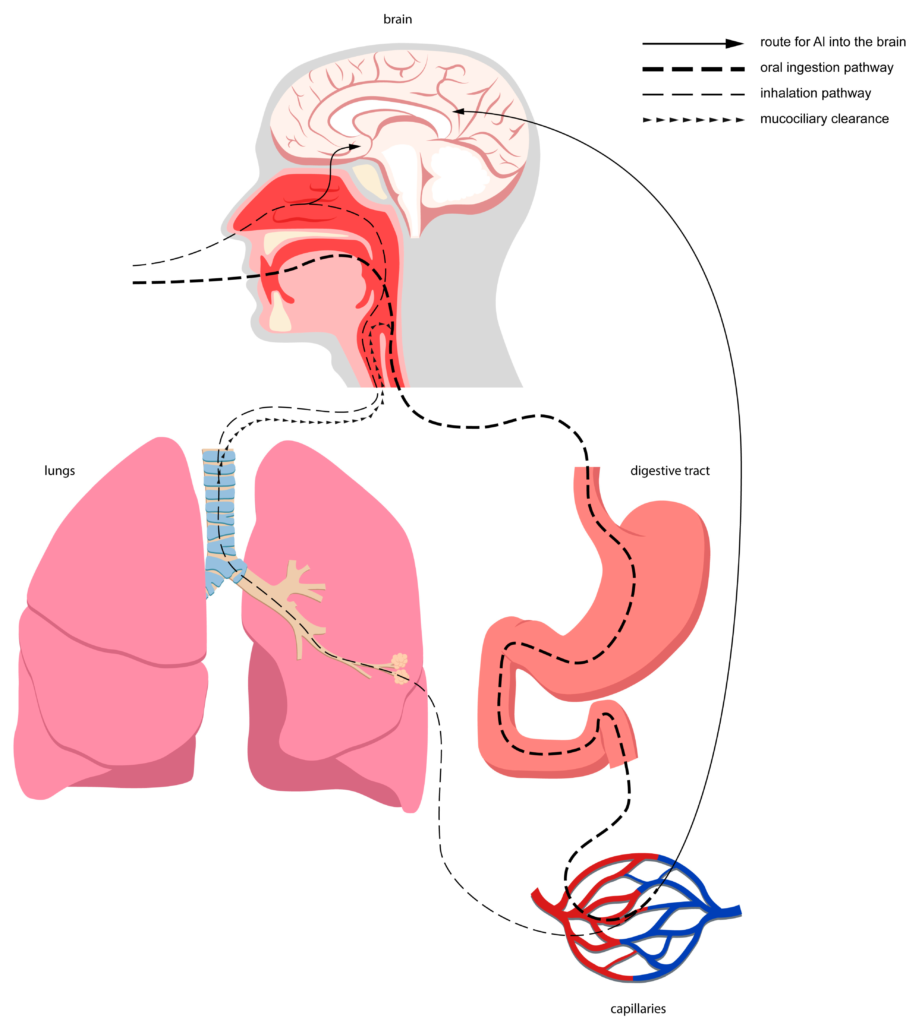
Aluminum toxicity is a concern for human health, as it can lead to various adverse effects. In this article, we will explore the question “Is aluminium toxicity reversible?
Here are ten things to know about aluminum toxicity and its reversibility:
1. Aluminum toxicity can lead to various adverse effects, including cardiac toxicity, encephalopathy, and intraventricular thrombus.
2. Many of these effects appear to be reversible with appropriate treatment.
3. Severe cardiac toxicity associated with aluminum phosphide poisoning may be reversible, provided the patient can be sustained during the “insult period”.
4. Acute encephalopathy due to aluminum toxicity was successfully treated by combined intravenous deferoxamine and hemodialysis.
5. The treatment of aluminum toxicity involves eliminating aluminum exposure and, in some cases, using chelation therapy.
6. Chelation therapy should be initiated in consultation with a nephrologist and a medical toxicologist and can be performed upon hospital admission.
7. The chelating agents used for aluminum toxicity include deferoxamine and edetate.
8. Withdrawal of all parenteral sources of aluminum and stopping aluminum-containing phosphate binders are part of the treatment for aluminum toxicity.
9. Al accumulation, which is responsible for Al toxicosis, is enhanced by exposure to Al and its continuous intake, as well as increased intestinal absorption and decreased excretion of the metal.
10. The toxic actions of Al responsible for the toxic effects of the toxicities are diverse and capable of generating outcomes in the cell and disrupting cellular homeostasis.
- Is aluminium toxicity reversible? the symptoms of aluminum toxicity
- What are the sources of aluminum exposure?
- What are the long-term effects of aluminum toxicity?
- What are the effects of aluminum toxicity on bone health?
- How is aluminum toxicity treated?
- How long does it take to recover from aluminum toxicity?
- What are the guidelines for safe aluminum exposure levels?
- What is chelation therapy, and how does it work?
- Helpful Resources
Is aluminium toxicity reversible? the symptoms of aluminum toxicity
The symptoms of aluminum toxicity can manifest in various ways. Some of the common symptoms include:
1. Neurological Manifestations: Memory loss, tremor, jerking movements, diminished coordination, weakness in motor movements, lack of curiosity, ataxia, and speech disturbances.
2. Musculoskeletal Symptoms: Proximal muscle weakness, bone pain, and multiple nonhealing fractures.
3. Other Effects: Liver stenosis, nephrotic syndrome, and respiratory system damage.
4. Acute Encephalopathy: Symptoms associated with acute aluminum toxicity appear to be reversible.
It’s important to note that the signs and symptoms of aluminum toxicity can be nonspecific, and patients with chronic toxicity often have some degree of kidney disease.
If you suspect exposure to high levels of aluminum and experience any of these symptoms, it’s essential to seek medical attention for proper diagnosis and treatment.
What are the sources of aluminum exposure?
The sources of aluminum exposure include:
1. Airborne Particles: Dust from soil and rocks, as well as human activities such as mining, agriculture, and industrial processes, contribute to the presence of aluminum in the air.
2. Drinking Water: Residues of aluminum compounds can be found in drinking water, with approximately 1-2% of the daily intake of aluminum coming from this source.
3. Food: Food is the primary oral intake source of aluminum, accounting for approximately 95% of daily intake. Processed foods containing aluminum additives contribute to this exposure.
4. Cosmetics and Personal Care Products: Dermal exposure from cosmetics, especially antiperspirants, can be a significant non-dietary intake source of aluminum.
5. Consumer Products: Aluminum is present in various consumer products such as antacids, astringents, buffered aspirin, food additives, and some cooking utensils.
6. Occupational Exposure: Workers in industries such as mining, processing of ore, scrap metal recycling, and industrial activities involving aluminum may be exposed to high levels of aluminum.
It’s important to be aware of these sources of exposure and take measures to minimize potential risks, especially in the case of occupational exposure and the use of consumer products containing aluminum.
What are the long-term effects of aluminum toxicity?
The long-term effects of aluminum toxicity can be diverse and affect various organ systems. Some of the long-term effects include:
1. Neurological Manifestations: Memory loss, tremors, and jerking movements are important manifestations of brain injury associated with aluminum poisoning.
2. Musculoskeletal Symptoms: Aluminum toxicity can lead to proximal muscle weakness, bone pain, and multiple nonhealing fractures.
3. Organ Damage: Liver stenosis and nephrotic syndrome are important manifestations of aluminum toxicity.
4. Respiratory and Nervous System Damage: Aluminum poisoning can severely damage the brain and respiratory system, leading to significant health implications.
5. Other Effects: Aluminum toxicity can affect blood content, the musculoskeletal system, and the extent of aluminum poisoning can have complex and multidimensional effects, such as disruption or inhibition of enzyme activities, changing protein synthesis, nucleic acid function, and cell membrane permeability.
It’s important to note that aluminum toxicity can have far-reaching consequences, and the long-term effects can impact multiple aspects of health. Seeking medical attention for proper diagnosis and treatment is crucial if aluminum toxicity is suspected.
What are the effects of aluminum toxicity on bone health?
The effects of aluminum toxicity on bone health include:
1. Fractures and Osteomalacia: Aluminum toxicity can lead to fractures accompanying painful osteomalacia, which is a softening of the bones.
2. Hypoparathyroidism: Aluminum toxicity can contribute to hypoparathyroidism, a condition characterized by low levels of parathyroid hormone, which can affect bone health.
3. Microcytic Anemia: Aluminum toxicity is associated with microcytic anemia, a condition in which the body doesn’t produce enough red blood cells, leading to fatigue and other symptoms.
4. Interference with Bone Mineralization: Aluminum may interfere with normal bone mineralization, potentially leading to bone density issues and other complications.
5. Inhibition of Bone Remodeling: High doses of aluminum can inhibit bone remodeling, slowing down the activities of bone-forming and bone-resorbing cells, which can result in adverse bone effects.
These effects highlight the significant impact of aluminum toxicity on bone health, emphasizing the importance of minimizing exposure and seeking medical attention if aluminum toxicity is suspected.
How is aluminum toxicity treated?
The treatment of aluminum toxicity involves several approaches, including:
1. Elimination of Aluminum Exposure: This includes avoiding aluminum in the diet, total parenteral nutrition, dialysate, medications, and antiperspirants.
2. Chelation Therapy: Chelation therapy should be initiated in consultation with a nephrologist and a medical toxicologist and can be performed upon hospital admission. Chelating agents used for aluminum toxicity include deferoxamine, edetate calcium disodium (calcium disodium ethylenediaminetetraacetic acid, EDTA), and succimer (meso-2,3-dimercaptosuccinic acid, DMSA).
3. Combination Therapy: Chelator combinations that have shown efficiency in removing aluminum include ascorbate (vitamin C), deferoxamine, and Feralex-G (a new chelator used in the mouth).
4. Avoidance of Aluminum: Once the need to do so is recognized, avoidance of aluminum is easily achieved in most cases, which is an important aspect of the treatment.
5. Monitoring: Serum aluminum levels are monitored, and chelation therapy may be considered in patients with clinical manifestations of chronic aluminum toxicity.
These treatment approaches aim to eliminate further exposure to aluminum and remove the element from the body’s stores through chelation, thereby addressing the toxic effects of aluminum.
How long does it take to recover from aluminum toxicity?
The recovery time from aluminum toxicity can vary based on the individual’s exposure levels and the effectiveness of treatment.
While the excretion of absorbed aluminum is estimated to occur mostly within the first week after exposure, the excretion process may last between a few hours, a few days, and even a few years.
The duration of recovery is influenced by factors such as the frequency, type, and route of exposure, as well as the body’s ability to eliminate the metal.
Additionally, the reversal of symptoms and health effects associated with aluminum toxicity depends on the specific manifestations and the success of treatment in eliminating aluminum from the body’s stores.
Therefore, the recovery period from aluminum toxicity is not clearly defined and can vary widely among affected individuals.
What are the guidelines for safe aluminum exposure levels?
The guidelines for safe aluminum exposure levels vary depending on the source and the regulatory body. Here are some key points from the provided sources:
1. Environmental Levels: The average range of aluminum in the air is 0.005–0.18 µg/m3, with higher levels in urban and industrial areas.
2. Occupational Exposure Limits: The legal airborne permissible exposure limit (PEL) for aluminum is 15 mg/m3 for total dust and 5 mg/m3 for respirable dust averaged over an 8-hour workshift, as per OSHA. NIOSH recommends an airborne exposure limit of 10 mg/m3 for total dust and 5 mg/m3 for respirable dust averaged over a 10-hour workshift.
3. Drinking Water: The EPA has recommended a Secondary Maximum Contaminant Level (SMCL) of 0.05–0.2 mg/L for aluminum in drinking water. This level is based on taste, smell, or color, not on health effects.
4. Food and Consumer Products: The FDA has set a limit for aluminum in bottled water of 0.2 mg/L. The tolerable weekly intake (TWI) level of aluminum by diet was established to be 1 mg/kg per week for adults.
5. General Public Exposure: Low-level exposure from the correct use of products that contain aluminum, such as cans, cookware, and food wrappings, is not expected to cause harmful effects.
It’s important to note that these guidelines are based on various factors, including the duration of exposure, the route of exposure, and the form of the chemical. Additionally, occupational exposure limits are typically more stringent than general environmental or consumer exposure limits.
What is chelation therapy, and how does it work?
Chelation therapy is a medical procedure used to remove heavy metals from the body. It involves the administration of chelating agents, which are substances that bind to heavy metals and help clear them from the body.
The chelating agents can be administered intravenously or in pill form. Once the chelating agent binds to the metal, the body eliminates them both through urine. Chelation therapy is a proven treatment for heavy metal poisoning, such as lead, mercury, iron, and arsenic poisoning.
However, it is important to note that chelation therapy carries risks and side effects, and its use for conditions other than heavy metal poisoning is controversial and not supported by strong clinical evidence. Therefore, it should only be used under medical supervision and for the treatment of heavy metal poisoning.
Helpful Resources
- https://sciendo.com/article/10.2478/intox-2019-0007
- https://intapi.sciendo.com/pdf/10.2478/intox-2019-0007
- https://www.degruyter.com/document/doi/10.1515/bmc-2012-0045/pdf
- https://www.sciencedirect.com/topics/medicine-and-dentistry/aluminum-overload
- https://www.ncbi.nlm.nih.gov/pmc/articles/PMC7071840/
- https://www.ncbi.nlm.nih.gov/pmc/articles/PMC8767391/
- https://emedicine.medscape.com/article/165315-clinical
- http://onlinelibrary.wiley.com/doi/10.1177/00912700022008847/pdf
- https://www.atsdr.cdc.gov/ToxProfiles/tp22-c1-b.pdf
- https://www.medicalnewstoday.com/articles/327485
- https://wwwn.cdc.gov/TSP/ToxFAQs/ToxFAQsDetails.aspx?faqid=190&toxid=34
- https://www.sciencedirect.com/science/article/pii/S2405525518301766
- https://www.ncbi.nlm.nih.gov/pmc/articles/PMC6453153/
- https://www.ajronline.org/doi/pdfplus/10.2214/ajr.142.2.424
- https://www.sciencedirect.com/science/article/abs/pii/S0271531703002550
- https://pubmed.ncbi.nlm.nih.gov/8772804/
- https://emedicine.medscape.com/article/165315-treatment
- https://www.atsdr.cdc.gov/toxguides/toxguide-22.pdf
- https://www.nj.gov/health/eoh/rtkweb/documents/fs/0054.pdf
- https://www.ema.europa.eu/en/documents/scientific-guideline/chmp-safety-working-partys-response-pdco-regarding-aluminium-hydroxide-contained-allergen-products_en.pdf
- https://www.gov.uk/government/publications/aluminium-properties-and-incident-management/aluminium-general-information
- https://thecorrecter.com/what-to-do-if-you-accidentally-eat-aluminum-foil/
- https://thecorrecter.com/can-you-put-aluminium-foil-in-an-air-fryer/
- https://thecorrecter.com/what-size-aluminium-wire-for-125-amp-service/
- https://thecorrecter.com/how-to-remove-scratches-from-aluminium-4/
- https://thecorrecter.com/is-aluminium-malleable-and-ductile/
- https://thecorrecter.com/how-is-aluminium-mined-2/
- https://thecorrecter.com/does-aluminium-cause-dementia-2/
- https://thecorrecter.com/how-to-remove-anodising-from-aluminium-2/
- https://thecorrecter.com/how-does-aluminium-cans-affect-the-environment/
- https://thecorrecter.com/how-to-restore-aluminium-boat/
- https://thecorrecter.com/does-aluminium-foil-catch-fire/
- https://thecorrecter.com/can-aluminium-be-soldered/
